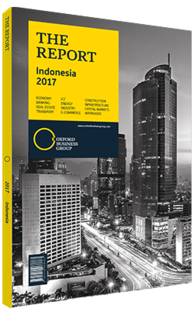Pandu Sjahrir, Chairman, Indonesian Coal Mining Association: Interview

Interview: Pandu Sjahrir
What policies are needed to boost private investment for the 35-GW power plan?
PANDU SJAHRIR: The plan for 35 GW will cost roughly $1.5m per MW, which means an investment of $50bn-60bn is required. Out of that, 50-60% has to be coal-related power, which is roughly $25bn-30bn. Given that the plan is targeted over a five-year period, the figure is roughly $5bn-7bn per year for coal power investment.
Capital expenditures for Indonesian mining reached its peak in 2011 at around $1.9bn, and today it is roughly $350m-400m. So the question is, how do we get from $400m per year to $5bn-7bn per year? If you look at the situation from that level of analysis, many people will say that this is a very difficult thing to achieve.
Fortunately, a lot of the mining companies are very focused on following the government policies and developing power. However, out of the roughly 20 GW that is supposed to come from coal, domestic companies can only account for around 30% of the new power production – assuming investment increases to the aforementioned target – and the rest will have to come from outside entities. The opportunity set is there, but companies have to make sure it returns profits to shareholders.
The picture over the next five years is that the sector has to increase cap-ex five to seven fold, and to do that you have to make the investment attractive from an internal rate of return (IRR) perspective. Today, we are looking at 10-11% IRR on the project level. Along with this, the cost of financing is also currently high, so companies need about 15-16% equity IRR or they will not come to Indonesia. Access to cheap financing can be particularly limited for local companies. Local banking capacity is too shallow to provide financing for these types of projects, so local companies have to go to regional or global banks. However, for global banks there are limitations as well, so companies can only go to certain banks in certain countries and the cost of financing remains high.
A private solution therefore seems a bit difficult, which means that government assistance is necessary. This can come in the form of either a higher tariff or a higher subsidy, which would both raise the IRR. Capital is also currently trending away from emerging markets, putting more upward pressure on the cost of financing. Fiscal and monetary policies could be used to create more depth in the domestic banking sector, which could be a remedy to this. The government has to play an active role in this regard.
To what extent can power developments increase demand for domestic coal?
SJAHRIR: Coal in Indonesia today is tied to global prices. Going forward, Indonesia will need all of its coal for domestic purposes, which means in the future the price will be less globally dependent. Today, we have cost-plus-20-25%. If we extend this to the whole of Indonesia, it could be a viable solution. The 20 GW capacity from coal for the next five years, in addition to the 12 GW planned by 2021, will require a total of 280m tonnes, which is two-thirds of the current capacity of 390m tonnes. Today, three-fourths of our coal is being exported, and one-fourth is domestic. If everything goes according to plan, it will change to one-fourth being used for exports and three-fourths used domestically. We will have to change the price mechanism to reflect that. We are currently analysing the reserves and trying to find out if we have the required amount to meet the demand for the power plan. Results indicate reserves are down by 40% and will only last until 2032. Therefore, it is very likely that we do not have enough coal to support the first 35 GW at today’s coal price.
You have reached the limit of premium articles you can view for free.
Choose from the options below to purchase print or digital editions of our Reports. You can also purchase a website subscription giving you unlimited access to all of our Reports online for 12 months.
If you have already purchased this Report or have a website subscription, please login to continue.

